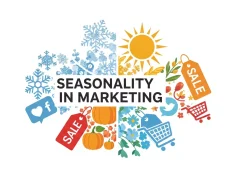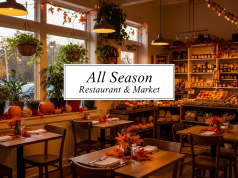The holiday shopping season represents the biggest opportunity of the year for most retailers. But while everyone focuses on traditional advertising and discounts, smart businesses are discovering a different approach: turning their customers into viral marketing machines through strategic referral programs.
Holiday promotions combined with referral marketing create a powerful one-two punch. Your existing customers become motivated advocates who spread the word about your brand, while new customers arrive with built-in trust from personal recommendations. The result? Exponential growth that costs less than traditional advertising and delivers better long-term results.
This guide will show you exactly how to design holiday referral campaigns that capture attention, drive participation, and create the viral momentum your business needs to dominate the season.
Why Referral Marketing Dominates During the Holidays
Referral marketing works exceptionally well during holiday seasons for several psychological and practical reasons.

Trust becomes paramount when people shop for gifts. According to Nielsen’s Global Trust in Advertising report, 92% of consumers trust recommendations from people they know above all other forms of advertising. When your aunt recommends a brand she loves, that carries infinitely more weight than a Facebook ad from the same company.
The holiday season also amplifies sharing behavior. People naturally discuss their purchases more during this time—they’re excited about gifts they’ve found, they’re asking for recommendations, and they’re more likely to post about their shopping experiences on social media.
Gift-giving creates additional referral opportunities. When someone receives a product they love as a gift, they often want to know where it came from so they can purchase it themselves or recommend it to others. This creates a secondary wave of referrals that extends well beyond the initial holiday purchase.
Essential Elements of Viral Holiday Referral Campaigns
Successful holiday referral campaigns share several key characteristics that separate them from generic year-round programs.
Seasonal Relevance and Urgency
Your referral program needs to feel distinctly holiday-focused. Generic “refer a friend” messaging won’t capture the seasonal excitement that drives sharing behavior. Instead, frame your program around holiday themes like “Give the Gift of Great Deals” or “Share Holiday Joy and Save Together.”
Limited-time elements create urgency that drives immediate action. Consider running your referral program for specific periods like “12 Days of Referral Rewards” or “Black Friday Referral Bonuses.” The countdown effect motivates people to act quickly rather than putting it off.
Compelling Reward Structures
The most effective holiday referral programs offer rewards that feel generous and seasonal. Double-sided rewards work best—both the referrer and the referred friend receive something valuable. This removes friction from the referral process since neither party feels like they’re asking for a favor.
Progressive rewards can create additional momentum. Start with a base reward, then offer increasing benefits for multiple referrals. For example, the first referral earns 20% off, the second referral earns 30% off, third referral earns 50% off plus free shipping.
Gift-themed rewards align perfectly with holiday psychology. Consider offering “gift cards for successful referrals” or “free gifts with purchase for every friend who joins.” These rewards feel natural and seasonal rather than forced.
Seamless Sharing Mechanisms
Friction kills referral programs. Your customers need multiple easy ways to share with their networks. Email sharing remains the most effective channel, but social media sharing, text messaging, and direct link sharing should all be available.
Personalization makes sharing feel more authentic. Allow customers to customize their referral messages or include personal notes. Pre-written templates are helpful, but the option to add a personal touch increases sharing rates significantly.
Clear Communication and Tracking
Transparency builds trust in referral programs. Customers need to understand exactly how the program works, what rewards they’ll receive, and when they’ll receive them. Confusion leads to frustration and poor participation rates.
Real-time tracking dashboards help customers see their progress and maintain engagement. When people can watch their referrals convert and see their rewards accumulate, they’re more likely to continue participating actively.
Campaign Strategies That Generate Viral Momentum
Creating viral momentum requires strategic thinking about how your referral program spreads through networks and communities.
The Gift Card Multiplication Strategy
This approach turns gift card purchases into referral opportunities. When someone purchases a gift card during the holidays, offer them bonus value for referring friends who also purchase gift cards. For example, “Buy a $50 gift card, refer a friend who buys a $50 gift card, and you both get an extra $15 in bonus value.”
This strategy works because gift cards are already shareable by nature. People often coordinate gift card purchases with family members or friends, making the referral process feel natural rather than forced.
The Early Bird Advantage Program
Launch your referral program before your main holiday promotions begin. Reward customers who refer friends early with exclusive access to upcoming sales, early bird discounts, or special previews of new products.
This approach creates anticipation and exclusivity while building your customer base before the competitive holiday rush intensifies. Early participants feel like insiders, which increases their motivation to continue referring throughout the season.
The Social Proof Amplifier
Incorporate social proof elements into your referral program by showcasing successful referrers and their achievements. Create leaderboards, celebrate top referrers on social media, or send out newsletters highlighting customer success stories.
When people see others succeeding with your referral program, it validates their decision to participate and motivates them to increase their own efforts. Social proof creates a positive feedback loop that sustains program momentum.
The Community Challenge Approach
Turn your referral program into a community-wide challenge with collective goals and rewards. For example, “When our customers refer 1,000 friends this December, everyone who participated gets an extra 20% off their next purchase.”
Community challenges tap into the human desire to be part of something bigger. They create shared investment in the program’s success and encourage participants to actively promote the challenge to their networks.
Timing and Promotion Tactics That Maximize Participation
Strategic timing and promotion can dramatically impact your referral program’s success during the holiday season.
Pre-Holiday Launch Strategy
Start promoting your referral program 2-3 weeks before major shopping events like Black Friday or Cyber Monday. This gives customers time to understand the program and begin sharing before the shopping rush begins.
Use the pre-launch period to educate customers about how the program works and what rewards they can earn. Email sequences, social media posts, and website banners should all work together to build awareness and excitement.
Integration with Existing Promotions
Your referral program should complement, not compete with, your other holiday promotions. Consider offering referral bonuses that stack with existing discounts or exclusive referral rewards that aren’t available through other channels.
For example, during a sitewide 25% off sale, offer an additional 10% off for customers who successfully refer a friend. This creates a compelling reason to participate in the referral program even when other promotions are available.
Post-Purchase Activation
The period immediately after a purchase represents a golden opportunity for referral program enrollment. Customers are experiencing peak satisfaction with your brand, making them most likely to recommend you to others.
Include referral program information in order confirmation emails, package inserts, and follow-up communications. Make it easy for satisfied customers to share their positive experience while the emotion is still fresh.
Cross-Channel Promotion
Your referral program should be visible across all customer touchpoints. Website banners, email signatures, social media profiles, and even customer service interactions should all mention the program and its benefits.
Consistency across channels reinforces the program’s importance and ensures customers encounter referral opportunities regardless of how they interact with your brand.
Measuring Success and Optimizing Performance
Effective measurement goes beyond simple participation metrics to examine the full impact of your referral program.
Key Performance Indicators
Track referral conversion rates to understand how many shared links actually result in new customers. Low conversion rates might indicate issues with your landing pages, reward structure, or target audience alignment.
Monitor the lifetime value of referred customers compared to customers acquired through other channels. Referred customers often have higher retention rates and purchase more frequently, making them more valuable despite potentially higher acquisition costs.
Calculate the viral coefficient—the average number of new customers generated by each existing customer through referrals. A viral coefficient above 1.0 indicates true viral growth where each customer brings in more than one new customer.
A/B Testing Opportunities
Test different reward structures to find the optimal balance between cost and motivation. Try varying the reward amounts, timing, and types to see what drives the highest participation and conversion rates.
Experiment with different messaging approaches in your referral communications. Test emotional appeals versus rational benefits, urgency-based messaging versus evergreen content, and personalized versus generic communications.
Continuous Improvement Strategies
Collect feedback from program participants to understand what’s working and what isn’t. Survey customers who complete referrals as well as those who start but don’t finish the process.
Monitor social media mentions and customer support inquiries related to your referral program. These unsolicited feedback sources often reveal issues or opportunities that formal surveys might miss.
Analyze the customer journey from referral link click to final purchase. Identify drop-off points where potential customers abandon the process and optimize those specific touchpoints.
Launch Your Holiday Referral Success Story
Holiday referral marketing represents one of the most cost-effective ways to accelerate your business growth during the year’s most important shopping season. By combining the natural sharing behavior of the holidays with strategic referral program design, you can turn your existing customers into a powerful acquisition engine.
Success requires careful attention to program design, timing, and promotion. Start planning your holiday referral campaign at least 6-8 weeks before launch to ensure everything is properly tested and optimized. Focus on creating genuine value for both referrers and their friends, and make the sharing process as frictionless as possible.
Remember that the best referral programs feel less like marketing campaigns and more like opportunities for customers to share something they genuinely love with people they care about. When you achieve that balance, viral growth becomes not just possible, but inevitable.
Learn more about: Why New Seasons Markets Are Changing the Way We Shop









